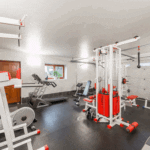Combined with isometrics, pulling and pushing exercises, and creativity, your pull-up bars may provide a full-body workout without taking up much space. You’ll feel like you spent hours at the gym when, in fact, you received the exercise at home. It’s as easy as altering your grip, working angles, and body movements.
If you’re wondering how to get a full-body workout with a pull-up bar, here are some of the most excellent pull-up bar exercises you can do that are meant to target more muscle groups than standard pull-ups, giving you a full-body workout.
Why Is Working Out With Pull-Up Bar Beneficial?
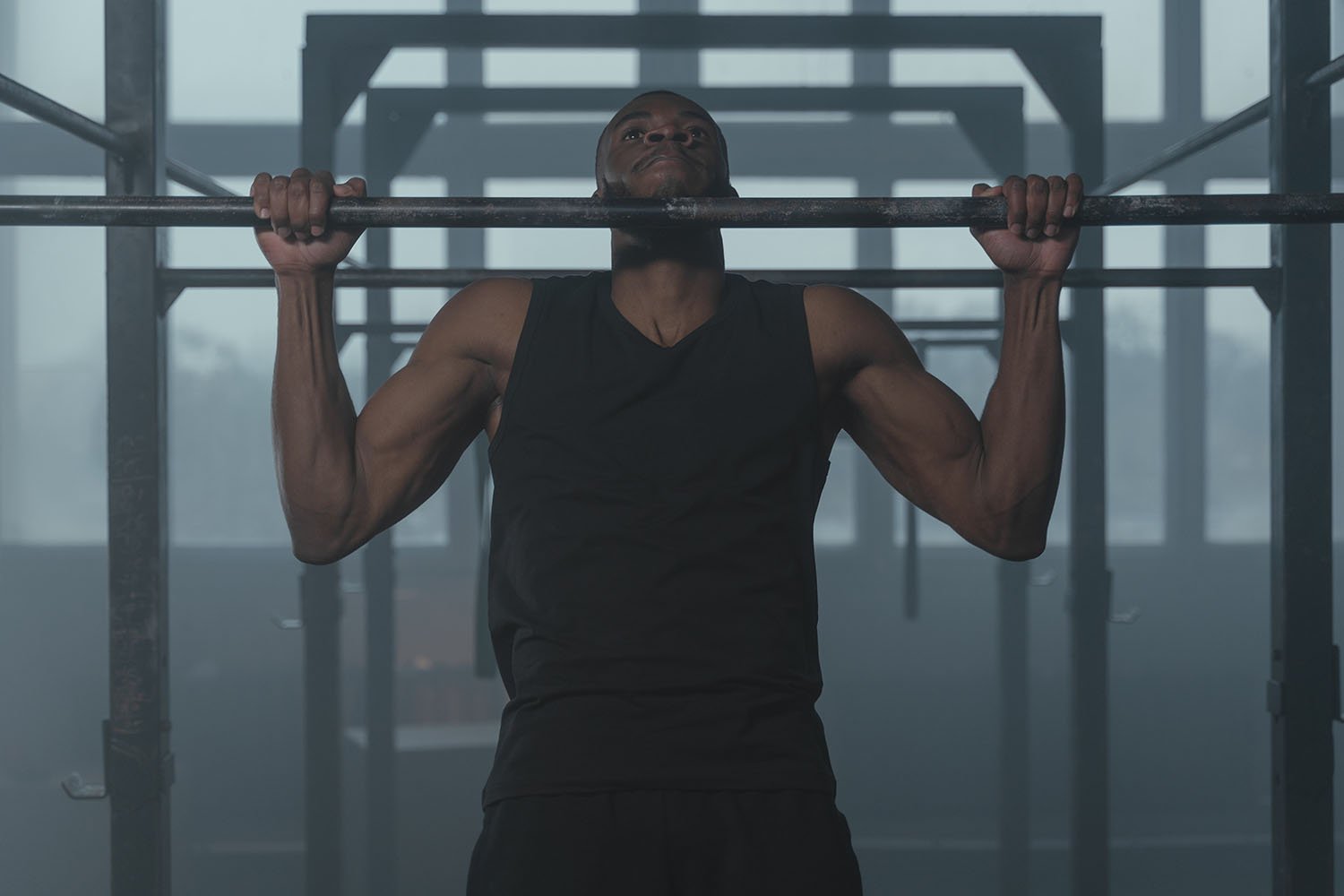
Pull-up bar workouts are becoming more popular as more fitness facilities are created and training assistance for home gyms. As a result, you may use the pull-up bar not only at the gym but also at home or outside. You can even hang it above the door to create a tiny home gym. The main benefit is that you don’t need anything besides your body. You might also bring some additional expanders to assist you with the workouts.
- Functional strength is developed by using the pull-up bar. This will be useful during dumbbell training and in regular life because your muscles will operate more efficiently with your neural system and be more involved.
- Frequent pull-up bar training will not turn you into Arnold Schwarzenegger, but you may expect muscle increases.
- The pull-up bar will help you build your arm muscles (shoulders, biceps, triceps, forearms) and your back, chest, and stomach. You will not only have a more defined shape, but you will also have better posture. You will also have a firmer grip, which you may employ while deadlifting.
- This exercise form, like any physical activity, provides additional benefits. It will not only help you gain muscle mass but also help you burn calories, aiding in weight loss.
- You will also gain physical fitness and mobility, such as coordination, balance, and flexibility.
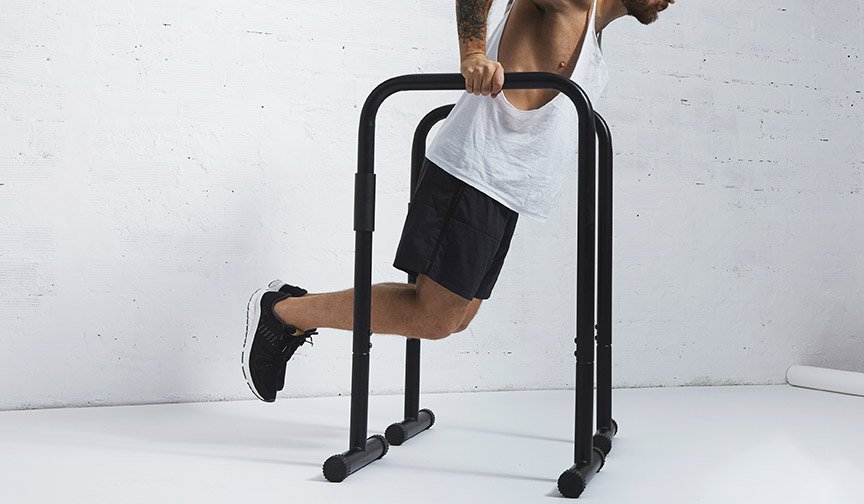
Every physical exercise is beneficial to both your physical and emotional well-being. You’ve probably had that fantastic post-workout sensation. Endorphins are responsible for it (the happiness hormones). They make you feel joyful and confident that you want to work out again.
Who Should Do Pull-Up Bar Strength Training?
Pull-up bars strength training can be good for anybody trying to develop a stronger core. Both beginners and expert readers can profit from them; nevertheless, specific fundamental qualifications must be met before getting started.
- Beginners
The sole need for practicing hanging strength training on a pull-up bar is that a novice has the grip strength and endurance to hang from a pull-up bar for at least 45 seconds. If grip strength and endurance are not developed, the overall efficacy of pull-up bars strength training will be hampered.
- Expert Lifters
The experienced lifter should be able to do all five exercises on the list below with proper technique and for higher repetitions, in addition to possessing grip strength and endurance. If they can perform this, they should be able to move to increasingly tricky activities.
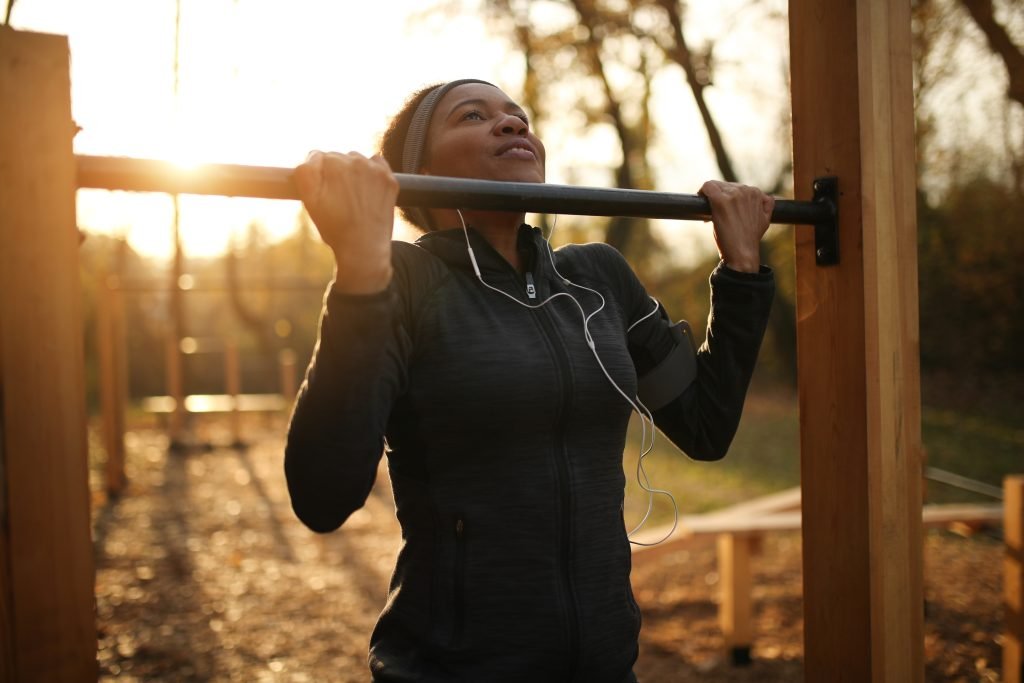
How Do You Train Using A Pull-Up Bar?
You don’t have to worry about the pull-up bar workouts, even if you’re a newbie. Regular exercise will quickly yield excellent effects.
Most of the pull-up bar routines may be adapted to your level of competence. Use a resistance band, also known as an expander, to make them simpler. It will lighten your load and assist you in combating gravity. If the basic workouts are too simple, increase the load and progress to the next level. You might try training with a weighted vest or ankle weight straps.
Incorporate at least twice a week of training in specified exercises. It is sufficient to complete merely a few repetitions (for example, 6-12 activities, 3-5 sets). Raise these numbers as you progress.
Attempt to do each exercise gently and with control. The quality of your performance, not the amount of reps, should be your emphasis. Only by learning the skill can you improve. You will learn to engage the correct muscles, which will help you avoid injuries and muscular imbalances.
In short, you don’t have to spend the entire workout on the pull-up bar. You can incorporate only a few exercises listed below into your training. For example, wide-grip overhand pull-ups will be required to work out your back muscles, while chin-ups will be needed to work out your biceps. You can also incorporate knee lifts or L-sits into your favorite workouts.
Bring the suspension trainer or gymnastic rings with you while you exercise on the pull-up bar. You may effortlessly connect these training aids to the pull-up bar and work your arms, abs, and legs efficiently. This will further modify your training. At the same time, you will exercise the same muscles as you would on a pull-up bar.
Best Pull-Up Bar Strength exercises
Here’s a selection of the best pull-up bar workouts to get you started.
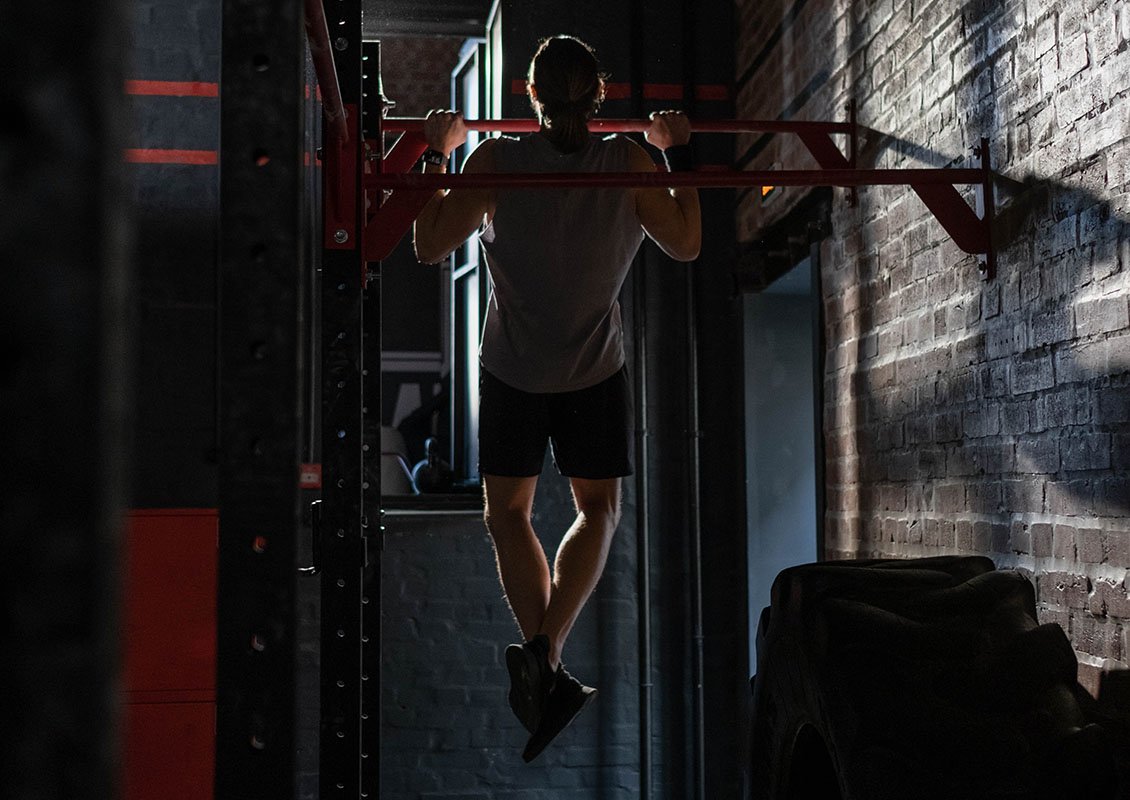
- Dead hang
Start with a dead hang if you want to work your way up to pull-ups. Take an overhand grip on the bar, palms facing away, and see how long you can hold on. This will improve your grip strength, which you’ll need to develop if you do numerous sets. If you can, elevate your arms slightly, so they aren’t fully locked out; this will assist you in increasing bicep strength.
- Negative pull-up
This terrific progression exercise will get you closer to a full pull-up and a grip strength workout. Use a small platform or jump to support oneself at the top of the move, with your chin at the same height as the bar and either a wide overhand grip or a close underhand grip. Next, with as much control as possible, drop your arms until they are completely extended. The key to succeeding with this shift is to go slowly and deliberately.
- Pull-ups
Pull-ups are an excellent upper body workout that primarily works your back muscles but also helps to build your arms and core muscles significantly as your form improves. Begin in a dead hang with straight elbows and hands facing away from you. Tighten your core while keeping your chest and shoulders back, then lift yourself until your chest contacts the bar. If you still need to do a pull-up, there are many alternatives to try, such as flex hangs, leaping pull-ups, and more.
- Burpee Pull-Ups
Burpee pull-ups are a highly advanced workout (and one of my favorites) that improves strength while quickly raising your heart rate.
To perform one, stand in front of pull-up bars, squat with your hands on the floor, push yourself up by kicking your feet back, and lower your body to the floor. Bow up or perform a full push-up, then return to the squat posture, leap into the air, and perform pull-ups. The more challenging they are, trust me! The higher the pull-up bars you use.
- Chin-up
Chin-ups are an excellent workout for your biceps because they put those muscles through a full range of motion, encouraging muscular growth. Closely grab the bar with your palms facing you. As you reach the peak, squeeze your biceps to stimulate more development.
- Forearm pull-ups
If your pull-up bar has forearm grips, utilize them with your hands facing each other. Your back and biceps are being exercised, but this is one of the few workouts that develop forearm strength. Improving that is an excellent approach to enhance any workout that requires you to hold anything, which is many.
- Side-to-side pull-up
Flip the whole pull-up thing on its side for a great shoulder and biceps workout. Hold the pull-up bar on both sides, hands facing opposite directions. Lift yourself, shifting your weight to one side as you reach the top so that one shoulder hits the bar. Descend gently, then repeat, but change to the opposite side as you ascend. Each rep alternates sides.
- Hanging Leg Raises
Another terrific core strengthening workout, hanging leg lifts require you to concentrate on control while challenging your grasp.
Grab pull-up bars with your hands facing away from you, tense your abs, and lift your shoulders back and down to perform them. Lift your legs parallel to the floor, keeping them straight. Hold for a second, then slowly lower down. By bringing your toes up to the bar, you can make hanging leg lifts even more challenging. Maintain your knees straight and avoid using too much momentum to get there!
- L-Sits
Although most people associate l-sits with the floor or parallel bars, they may also be performed while hanging from a pull-up bar to assist develops core strength.
Grab a pull-up bar with both hands and elevate your legs until they’re parallel to the floor to do a hanging l-sit. Instead of dropping down as in a dependent leg lift, maintain that static position for as long as possible.
Conclusion
The best pull-up bar workouts are merely a tiny sample of what is possible with the assistance of a pull-up bar. These pull-up bar routines can influence other exercises. Although a pull-up bar is adequate for various exercises, adding extra equipment expands the options.
This equipment includes, for example, our abdominal training straps, which let you train your stomach muscles more efficiently and effectively during pull-up bar door exercises. When you use resistance bands as additional equipment, you may execute a range of pulling and pushing workouts after attaching the bands to the bar.




